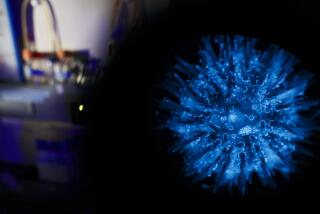Researchers give jellyfish extra heads
A two-headed jellyfish has risen from a petri dish with the help of scientists who tweaked its genes, according to a study released this week.
By adapting a standard gene-silencing technique, the researchers created tiny jellyfish with two or more heads and lots of extra tentacles.
The research, published in the open-access journal PLoS ONE, showed that knocking out just a gene or two could drastically affect an animal’s anatomy. The crucial genes are related to those in people that are essential for defining the head-to-tail axis during embryonic development.
The 1-millimeter-long jellyfish, which use their tentacles to walk along the sea floor instead of swimming, did not appear to suffer any hardship due to the extra body parts.
The main disadvantage was the extra energy it took to grow more heads, said senior author Bernd Schierwater, a zoologist at the Institute of Animal Ecology and Cell Biology in Hanover, Germany.
Schierwater’s study marks the first time the gene-silencing method worked for marine animals. Previous attempts failed in the high-salt environment that ocean creatures require.
It turns out the solution was simple. By dropping the salinity of the water, Schierwater was able to silence the genes he was interested in -- at least in the jellyfish that survived the low-salt treatment.
“Now everyone can use our protocol,” he said.
Schierwater suggested that what he did in the lab could have happened naturally in the oceans, as wild jellyfish evolved into colonial forms like those found in coral reefs, sharing one gut among multiple heads.





